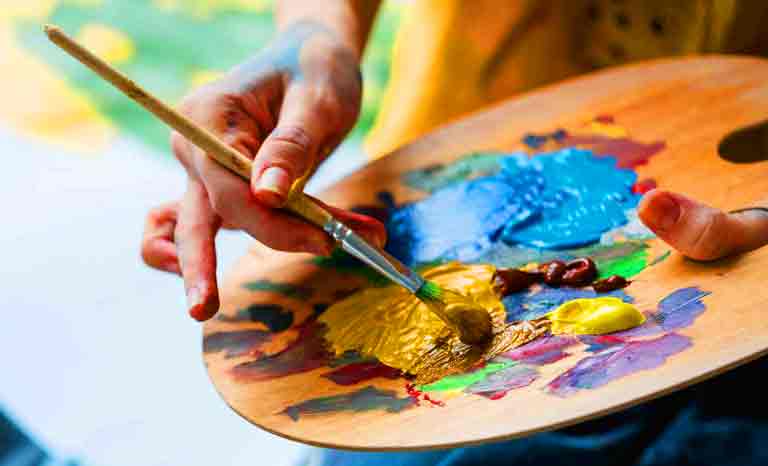Wren and Martin Comprehension Exercise 147
The Artist co-operates with God in making increasingly larger numbers of people see the beauty of the world which these people could never see for themselves, The world is, of course, God’s artistic masterpiece; but it is the artist who lends people eyes to see it with. Browning’s Fra Lippo has the last word on the subject:-
For, don’t you mark, we’re made so that we love
First when we see them painted, things we have passed
Perhaps a hundred times nor cared to see?
In this sense, Oscar Wilde’s paradox is perfectly true : that Nature imitates Art; for the majority of men see in Nature what Art has taught them to see in Nature. The fogs of London, said Wilde, were the invention of Whistler. To love beauty therefore becomes to the artist, as an artist, his first duty. To love beauty, that is, to see it for himself first, and then to communicate it to others; for love implies at once vision and reproduction. It must be the first article in an artist’s creed, as an artist, that beauty is the best interpreter of God to man; that; when he has got hold of beauty, he has got hold of the surest key to the knowledge of God. Keats has said that Beauty is Truth. Now, this is not true. But to us here, Beauty is, as Plato said, the splendour of Truth. The artist, as an artist, must be content with the splendour and, through this splendour strive to convey the truth. Tie has no business with truth as such as the philosopher, for instance, has. He has no concern with conduct as such, as the moralist, for instance, has. It is not his function to exhort men to good works, or to prove things; but merely to exhibit then. Plato thought a picture, for instance, was just a copy of an object – a copy of the idea. It was Aristotle, Plato’s pupil, who pointed out that, though a picture was in one sense certainly a copy and therefore something less than the object, in another sense it was something more than the object. It was, briefly, the idea of the object made visible to the eye. Art, therefore, does not consist merely in line and colour, sound and image; but primarily in ideas. Beauty may not be useful. Beauty may not improve our minds. But beauty must please. Indeed, such is the inherent delightfulness of beauty that, by its magic touch, not only the ugly becomes pleasureable, but even sorrow becomes a joy. That is the explanation of the pleasure we feel in tragedy. What would shock us in actual life gives us pleasure in a tragedy. For tragedy makes experience significant; and by making it significant, it makes it beautiful; and by making it beautiful, it makes it pleasant. And yet, it does not aim at pleasing; it only aims at exhibiting. Pleasure is not its aim; it is its effect.
– Armando Menezes
1. What does the artist do for most of us?
The artist acquaints us with the beauty of the world.
2. Why does the artist “lend” his eyes to people?
The artist lends his eyes to people for them to see the beauty of the world and nature. We often love things when we see them painted.
3. Explain: “Nature imitates Art.”
Many people are unable to see the beauty of nature unless they see it painted. They see in nature what art has taught them to see. So, nature imitates art.
4. What is the artist’s first duty? Why?
Artist’s first duty is to see, love and appreciate beauty. He cannot show the beauty, unless he sees it first.
5. What is the surest key to the knowledge of God? Why?
The surest key to the knowledge of God is to get hold of beauty. For, beauty is the best interpreter of God to man.
6. What is the artist’s real function?
Artist’s real function is to exhibit beauty of things.
7. In what does Art primarily consist?
Art primarily consists in ideas.
8. When does sorrow become a joy?
Art makes a sorrowful experience beautiful and by making it beautiful, it becomes joyously bearable. So, sorrow becomes a joy.






